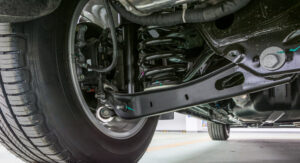MuscleCar Builds
Want more content like this?
Join the PowerNation Email NewsletterParts Used In This Episode
Afco Racing Products
REAR HUBS MADE BY PORT CITY.
American Racing
17 X 9.5 SHELBY COBRA CUSTOM DRILL
18 X 10 SHELBY COBRA CUSTOM DRILL
ARP
CROSS DRILLED BRAKE HAT BOLTS,
1/4-28X .750 AND NUTS.
ARP
SMALL HEAD FLYWHEEL BOLTS,BALANCER BOLT.
BF Goodrich
255/40R17 KDW
285/40R18 KDW
Bilstein
NON FILLED AND UNSPRUNG SHOCK ASSEMBLY.
Dan Olson Racing Products
Custom Aluminum Oil Pan
Fuel Safe
BOLT IN REPLACEMENT FUEL CELL WITH BLADDER.
G-Force Racing
Super T-10 Transmission.
Momar Injection
FUEL INJECTION SETUP,MANIFOLD,PUMPS AND CONTROLLER,EAGLE ROTATING ASSEMBLY,ARP FASTENERS,ROUSH CYLINDER HEADS,JE PISTONS,CROWER CAM ROCKER ARMS AND PUSHRODS.
Painless Performance
12 CIRCUIT FORD HARNESS,SPLIT SLEEVING.
Performance Friction
RACING SET UP CUSTOM MADE FROM OUR SPINDLE DESIGN.
Performance Friction
REAR SETUP,CUSTOM FOR OUR QUICK CHANGE REAREND.
Prothane
STOCK MOTOR MOUNTS.
Safe Craft
Fire System.

























